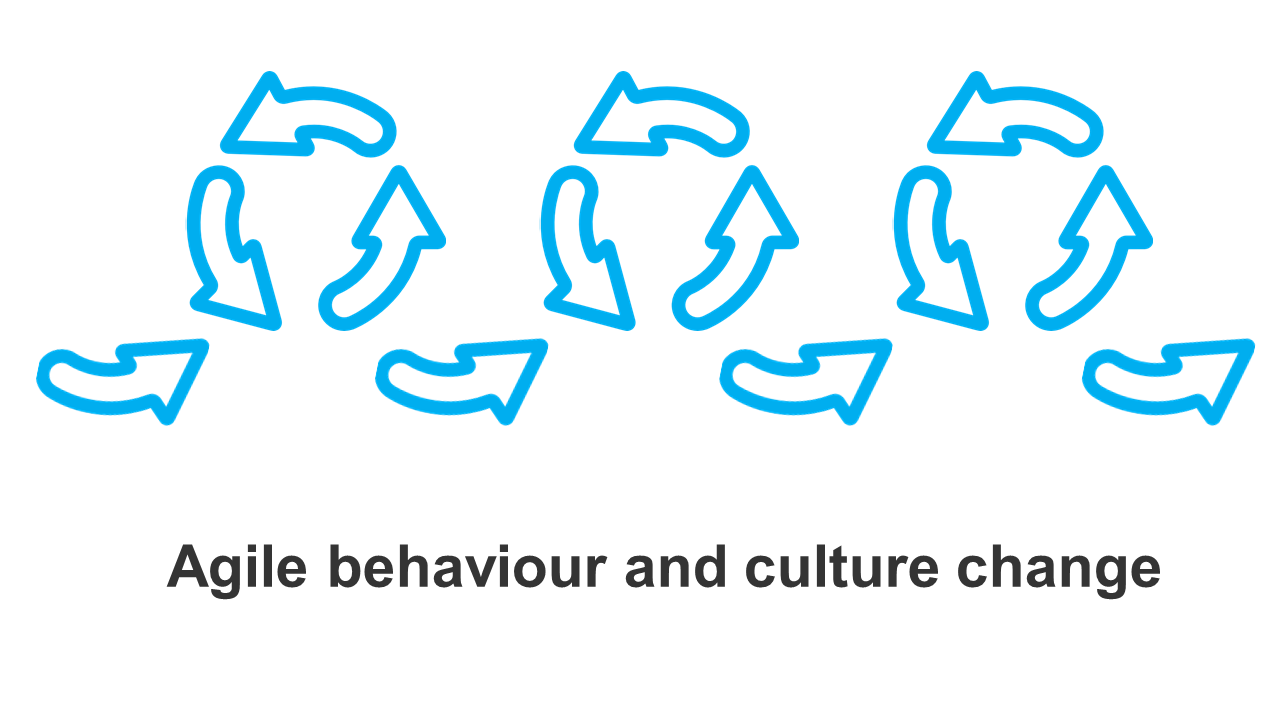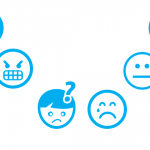I’m a big fan of Agile ways of creating and changing things. When the world is changing so fast and in such unpredictable ways, making and sticking to long implementation plans is increasingly fraught with problems. By the time you ‘launch’ whatever you have been working on, the landscape may well have moved on and all that time, effort and expense you have expended may have been wasted.
 To often, large cultural or behavioural change projects are planned and rolled out in a rigid, top-down manner, with very little testing along the way. Engagement in, and ultimately the success of, these programmes is usually pretty low.
To often, large cultural or behavioural change projects are planned and rolled out in a rigid, top-down manner, with very little testing along the way. Engagement in, and ultimately the success of, these programmes is usually pretty low.
The software development world (well at least the more modern version) has understood this for a while and commonly uses Agile methodologies. This is where they focus on a short ‘sprint’ of effort working on the highest priority task that is taking them closer to their vision. While doing this they are also constantly testing it with the ultimate customer or user, and changing what they are doing in the light of near constant feedback.
This results in small, but very regular delivery of value, and the project flexes in the light of market and environmental changes.
But if it works for software development, why not in changing an organisations culture and the behaviour of its people? After all, the culture of an organisation is analogous with its ‘software’.
Why do I feel Agile approaches are well suited to culture and behaviour change?
It’s fast
By having an intense focus on a small set of behaviours, the customer (ie the beneficiary of the culture or behaviour change you are looking for) feels the results of change fast. And they continue to feel the benefit of the delivered change while you start work on the next set, and the set after that!
It’s on-the-job change
Once the Agile change process is set out for your teams to follow and they have the basic skills and knowledge to use it, their actual work becomes the vehicle for change. It’s the 70/20/10 rule in action.
It’s ultra flexible
With a world constantly being disrupted and changing, it make sense to focus on short Sprints so you are always working on what matters most. As circumstances and priorities change, the focus can change quickly too.
It’s motivating
The transparent inclusive process, makes progress visible to all which is highly motivating, leading to increases in team engagement and satisfaction. It’s bottom up change, that typically leads to improved engagement metrics such as net promoter scores.
Quality is baked in
By integrating regular and meaningful communication and ‘testing’ with the actual customer into the cycle, you ensure that the change is right. And if it’s not, you can soon pivot and shift the necessary focus to get back on track.
It works!
Most culture change or leadership training programmes have limited success and often you discover that lack of success a year and a wasted budget later! By focusing on short, focused sprints, you are visibly banking culture and behaviour change gains, so you KNOW it is working.
Ok, so what does it look like? How do we actually use Agile approaches for behaviour change in our organisations? There are a number of approaches, but a typical one may look like this:
First get some insights
The insight phase can include facilitated discovery sessions with leaders, team members functional experts and of course internal or external customers. The idea is to discover all the challenges and changes that would help. At this stage it’s a long wish list or ‘backlog’.
You can also use sophisticated people analytics tools such as network and sentiment analysis at this stage to find out how ideas and influence really flows in your organisation. This insight helps work out who’s best suited to take on specific roles within the agile sprint.
Set up and coaching
Next you’d coach leaders and influencers (maybe those uncovered as super-influencers from our network analysis) on how to run their sprints, as well as introducing the approach to the wider teams.
You’d also coach simple skills and behaviours that will enable them to facilitate daily ‘stand-ups’, end of sprint ‘show and tells’ and ‘retrospectives’.
Choose your first ‘product’
In culture change, the ’product’ is a very specific behaviour change (maybe just one or two in each sprint) that will have the largest impact on internal or external customers, or on business outcome.
Informed by the insight phase, leaders and teams prioritise and choose the first behaviour change ‘products’ they want to work on. Priority and focus is the key.
Run change ‘sprints’
Your leaders run their own sprints, involving their whole team in daily stand up’s, testing and measuring progress as they go.
At the end of the sprint, they share the learning in a show-and-tell and hold a retrospective to see how the next sprint can be even better.
Rinse and repeat
The teams then go back to the backlog (the wish list),and together with the customer, they choose another behaviour or change to focus on for their next sprint.
By repeating this cycle, the teams deliver small, but regular changes which quickly add up.
I’ve seen successful applications of Agile approaches to change behaviours in sales teams, contact centres and even HR teams. Increasingly I see it widely and successfully applied to any cultural change challenge.
Do you want to explore culture and behaviour change using Agile ideas? Simon and his team helps organisations design, mentor and embed Agile ways of working, including changing organisational cultures. Call Simon on 020 3488 0464 or email simon@simonwalker.org








